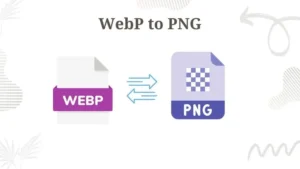Image transparency involves certain areas of an image being see-through. Commonly used in design and digital projects, it allows for layering elements and blending seamlessly into different backgrounds. Formats like PNG use an alpha channel to represent transparency, offering versatility in creative applications.
In the vast breadth of graphic design, the conception of image translucency takes center stage, weaving itself intricately into the fabric of this creative discipline. This disquisition delves deep into the complications of casting transparent images, unraveling the profound significance of translucency within the elaborate shade of graphic design.
Difference Between Normal Image and Transparent Image:
The fundamental distinction between a straightforward picture and a typical picture lies in the presence or nonattendance of a foundation. Here is a clarification of each:
Typical Picture:
An ordinary picture, otherwise called an obscure picture, normally has a strong and noticeable foundation.
The foundation is many times a strong variety or a nitty gritty scene that encompasses the primary subject of the picture.
The whole material of the picture is loaded up with pixels, and there is no region that permits you to see through to what is behind the picture.
Straightforward Picture:
The background of a transparent image can be seen through it or is invisible.
Rather than a strong foundation, certain pieces of the picture are assigned as straightforward, permitting whatever is behind the picture to appear on the other side.
The opacity of each pixel in the transparent areas is frequently specified by a distinct “alpha” channel in the image file.
Use Cases:
Straightforward pictures are regularly utilized in visual computerization, website composition, and advanced media where you maintain that the picture should coordinate consistently with the foundation.
Ordinary pictures are more run of the mill in photography and customary realistic substance where a strong foundation is wanted.
Record Organizations:
Normal record designs that help straightforwardness incorporate PNG (Versatile Organization Illustrations) and GIF (Designs Exchange Arrangement).
Transparency is not supported in the JPEG (Joint Photographic Experts Group) format, which is commonly used for normal images.
While a typical picture has a strong and noticeable foundation, a straightforward picture considers specific pieces of the picture to be transparent, giving adaptability by they way it tends to be coordinated into various foundations or formats.
Why Make an Image Transparent?
Making a picture straightforward fills a few needs and is an important strategy in different settings. Here are a few motivations behind why one could decide to make a picture straightforward:
Joining with Various Foundations:
Straightforward pictures are much of the time utilized in visual depiction and website architecture to consistently coordinate a subject into different foundations. This takes into consideration adaptability while putting pictures on various hued or designed foundations without the requirement for complex altering.
Overlaying Content:
Straightforwardness is helpful for overlaying one picture or realistic component onto another. When making image overlays for websites, presentations, or multimedia projects, this is a common occurrence.
Logo Plan:
Logos with straightforward foundations can be effortlessly put on various materials or surfaces without a diverting or differentiating foundation. This is particularly significant for marking and advertising purposes.
Picture Mixing and Layering:
Straightforward pictures work with layering and mixing impacts in realistic altering programming. Fashioners can make complex organizations by stacking straightforward layers, bringing about outwardly engaging and dynamic designs.
Watermarks on Images:
Straightforward watermarks can be applied to pictures to safeguard licensed innovation while permitting watchers to see the fundamental substance. This is common in digital artwork, stock photos, and photography.
UI Plan:
In UI (UI) plan, straightforward components can be utilized to make outwardly engaging overlays, modals, or tooltips that don’t totally block the hidden substance.
Virtual and Increased Reality:
Straightforward pictures are pivotal in virtual and expanded reality applications, where computerized components should be flawlessly coordinated into this present reality climate.
Decreasing Visual Mess:
An image’s background can be removed to reduce visual clutter and focus on the main subject. This is especially helpful in item photography or while separating explicit components.
Enhancing Appearance:
Straightforward components can add a bit of polish and refinement to plans. This is much of the time found in present day website architecture, where straightforwardness is utilized for unpretentious impacts and changes.
Methods for Making Images Transparent: Navigating the Labyrinth
In the mind boggling domain of advanced plan, the quest for picture straightforwardness makes the way for imagination and adaptability. This investigation explores the maze of strategies utilized for making pictures straightforward, unwinding the assorted procedures that engage originators, designers, and craftsmen to consistently coordinate visuals. Understanding these strategies is fundamental for becoming amazing at picture straightforwardness and bridling its possible across different imaginative undertakings.
Alpha Channel Veiling:
Alpha channel covering is a basic strategy for acquainting straightforwardness with pictures. This procedure includes relegating changing degrees of darkness to various pixels in the picture, making a nuanced straightforwardness impact. Designs like PNG support alpha channels, permitting originators to safeguard point by point straightforwardness data inside the picture record.
Layer Mistiness Changes:
In visual computerization programming, changing the haziness of individual layers is a direct yet strong strategy for accomplishing picture straightforwardness. The ability of designers to control the transparency of particular components of a composition makes it easier to create designs that are visually dynamic and multilayered.
Inclination Straightforwardness:
In order to achieve gradient transparency, areas of an image must gradually transition from opaque to transparent. This technique is especially useful for blending images into a variety of backgrounds and softening edges. Creators frequently utilize inclination straightforwardness to accomplish a smooth and normal incorporation of visual components.
Paths and Cutouts for Clipping:
Accuracy in picture straightforwardness is accomplished through cutting ways and patterns. Via cautiously illustrating the subject or item, planners can detach it from the foundation, making a straightforward setting. This technique is frequently employed in product imagery and photography to seamlessly incorporate subjects into various settings.
Masks of Opacity:
Darkness veils offer a flexible strategy for specifically uncovering or disguising bits of a picture. Fashioners can utilize grayscale pictures as murkiness covers, where hazier regions demonstrate more straightforwardness. This technique gives fine command over straightforwardness levels, considering multifaceted and definite changes.
Web Design Transparency with CSS:
A potent set of tools for introducing transparency into web design are Cascading Style Sheets (CSS). Utilizing CSS properties like “haziness” and “rgba,” engineers have some control over the straightforwardness of components straightforwardly inside the page, upgrading the general client experience and point of interaction plan.
Online Tools for Image Transparency:
Free Online Tools:
Lunapic:
Website: Lunapic
Instructions:
Upload your image.
Navigate to the “Edit” menu and select “Transparent Background.”
Adjust the tolerance if needed.
Click the “Make Transparent” button.
Remove.bg:
Website: Remove.bg
Instructions:
Upload your image.
The tool automatically removes the background, making it transparent.
Download the edited image.
Online Image Editor:
Website: Online Image Editor
Instructions:
Upload your image.
In the left sidebar, pick the “Straightforwardness” choice.
Utilize the “Set Straightforward Variety” apparatus to make portions of the picture straightforward.
Canva (Free Version):
Website: Canva
Instructions:
Create a free account if you don’t have one.
Start a new design with your uploaded image.
Click on the image, go to “Effects,” and adjust the transparency slider.
Paid Online Tools:
Canva (Pro Version):
Website: Canva Pro
Features:
Canva’s Pro version offers additional features, including advanced transparency controls.
Allows for more precise adjustments and customization.
Pixlr (Pixlr X – Premium):
Website: Pixlr
Features:
Pixlr X premium version provides advanced editing tools.
Offers more control over transparency adjustments and professional-grade features.
When using paid tools, make sure to explore the specific features and pricing plans to choose the option that best fits your needs.
Step-by-Step Guide to Making an Image Transparent:
Opening the capability of picture straightforwardness is a critical expertise in computerized plan, offering a passage to layered and outwardly powerful creations. This bit by bit guide explores the incomprehensible profundities of picture straightforwardness, giving a thorough guide to makers to flawlessly incorporate straightforwardness impacts into their visual ventures. From choosing the right apparatuses to dominating strategies, each step demystifies the cycle, enabling planners, specialists, and designers to graph new inventive skylines.
Choose the Right Software:
Begin by selecting a robust graphic design software that supports image transparency features. Popular choices include Adobe Photoshop, GIMP, or even online platforms like Canva. Ensure your chosen software allows for control over alpha channels and layer opacities.
Open Your Image:
Import the image you wish to make transparent into your chosen software. Ensure the image has sufficient resolution for clarity and detail in the transparency adjustments.
Duplicate the Layer:
Duplicate the image layer to preserve the original while working on the transparent version. This step acts as a safety net, allowing you to revert to the original if needed.
Explore Alpha Channels:
If working with software that supports alpha channels, explore this feature. Alpha channels allow you to assign varying levels of transparency to different pixels in the image. Create a new alpha channel and start experimenting with opacity levels.
Layer Opacity Adjustments:
For software without alpha channel support, utilize layer opacity adjustments. Gradually reduce the opacity of the duplicated layer, creating a transparent effect. This method is effective for achieving overall transparency in the image.
Precision with Selection Tools:
Employ selection tools, such as the magic wand or lasso, to precisely isolate areas for transparency. Cut out selected portions, creating transparency where needed. This is particularly useful for intricate cutouts and detailed adjustments.
Gradient Transparency:
Explore different avenues regarding slope straightforwardness to make smooth advances from obscure to straightforward regions. This method is amazing for relaxing edges and flawlessly mixing pictures into various foundations.
Fine-Tune with Masks:
Utilize masking techniques to fine-tune transparency levels. Masks allow for selective adjustments, enabling you to reveal or conceal specific parts of the image with varying degrees of transparency.
Export in PNG Format:
Once satisfied with the transparency adjustments, export the image in PNG format. PNG supports alpha channels, preserving the transparency information within the file. This format is ideal for maintaining image quality while incorporating transparency effects.
Integrate into Projects:
Finally, integrate your transparent image into your design projects. Whether for web design, presentations, or digital art, the transparency effects will enhance the visual appeal and depth of your creations.
Tips for Effective Transparency:
Here are a few ways to utilize straightforwardness really in your plans:
Think about the Foundation:
Prior to making a picture straightforward, consider the foundation against which it will be set. Check to see that the transparency does not clash with the patterns or colors of the background and instead enhances the design as a whole.
Use PNG Configuration:
Save your straightforward pictures in PNG design, as it upholds alpha channels for straightforwardness. This organization protects the nature of straightforward regions and is broadly upheld in website architecture and realistic altering programming.
Change Straightforwardness Levels Mindfully:
Explore different avenues regarding various degrees of straightforwardness to track down the right equilibrium. At times, an unpretentious straightforwardness can add profundity without overpowering the substance, while more articulated straightforwardness might be reasonable for explicit plan impacts.
Center around Differentiation:
To maintain readability and visibility, make sure the transparent elements and the background have sufficient contrast. Assuming the straightforwardness is excessively high, it could make text or different components challenging to observe.
Angle Straightforwardness:
Think about utilizing angle straightforwardness, particularly for overlays or foundation components. Transparency changes over time can create smooth transitions and give your design a sophisticated appearance.
Try not to Abuse Straightforwardness:
While straightforwardness can improve configuration, try not to abuse it. An excess of straightforwardness might bring about a jumbled or confounding visual experience. Use straightforwardness deliberately to draw consideration or make explicit impacts.
Keep things consistent:
In the event that involving straightforwardness in a progression of pictures or components, take a stab at consistency. A steady way to deal with straightforwardness makes a firm and expert plan.
Test Across Gadgets and Stages:
Examine how your transparent images appear on various platforms and devices. Some internet browsers or applications might decipher straightforwardness in an unexpected way, so testing is urgent for a reliable client experience.
Utilize Straightforward Components for Accentuation:
Apply straightforwardness decisively to feature or stress explicit components inside your plan. This could incorporate buttons, embolden components, or central focuses in a picture.
Join with Layer Impacts:
Explore different avenues regarding layer impacts, like shadows and sparkles, related to straightforwardness. Layer impacts can upgrade the visual effect of straightforward components and add to a more cleaned plan.
Think about accessibility:
Remember openness, particularly while involving straightforwardness for message or fundamental data. Make sure that the design is accessible to all users and that the text can still be read.
Keep in mind, the key is to utilize straightforwardness deliberately and nicely to improve the in general visual allure and adequacy of your plan.
VI. Real-world Applications: Bridging the Chasm Between Theory and Practice
Transparent images find Realistic operations in different scripts, from the scrupulous design of ensigns to watermarking and the creation of visually arresting donations
Understanding these practical applications widens the scope of image transparency, bridging the chasm between theoretical knowledge and real-world implementation.
VII. Challenges in Image Transparency: Confronting the Unforeseen Hurdles
While the benefits remain conspicuous, challenges lurk in the pursuit of transparent images. The potential loss of image details, compatibility hurdles, and the steep learning curve constitute formidable obstacles that users may grapple with in this convoluted journey through the intricate realm of image transparency.
VIII. Future Trends in Image Editing: Navigating the Turbulent Waters of Evolution
As technology undergoes a metamorphic evolution, so do the trends in image editing. The turbulent waters of evolution bring forth AI-driven transparency solutions, convergence with augmented reality, and the emergence of user-friendly transparency tools, offering a glimpse into the riveting future awaiting the realm of image editing.
IX. Importance of Transparency in Visual Communication: Unraveling the Essence
Beyond the labyrinth of technical intricacies, transparency assumes a pivotal role in the realm of visual communication. The construction of trust, augmentation of user experience, and the profound influence on branding represent dimensions through which transparency shapes the broader visual landscape, unraveling the essence of effective communication.
X. Conclusion: A Tapestry of Creative Possibilities
In conclusion, mastery over the art of image transparency unveils a myriad of creative possibilities, akin to navigating an ever-changing landscape. Whether one identifies as a graphic designer, web developer, or a casual user, comprehension of the techniques and applications discussed herein has the potential to elevate the visual creations within one’s grasp.
FAQs: Untangling the Threads of Curiosity
- Is transparency exclusive to graphic designers, or does it extend to other domains?
- Transparency transcends graphic design, proving valuable for web developers, presenters, and anyone seeking to enrich visual communication.
- Can any image be rendered transparent, or are there limitations to this transformative process?
- While many images can undergo transparency, factors such as image quality and file format may exert an impact on the outcomes.
- Do online tools exist to simplify the intricacies of creating transparent images?
- Yes, a plethora of online tools boasts user-friendly interfaces, enabling the creation of transparent images without the need for advanced software.
- In what ways does image transparency influence website design?
- Transparent images contribute to the modernization and dynamism of website design, frequently employed for crafting engaging overlays and distinctive visual effects.
- Which file formats support transparency, and are there exceptions?
- PNG and GIF are prevalent file formats supporting transparency, whereas JPEG lacks compatibility with transparent backgrounds.



